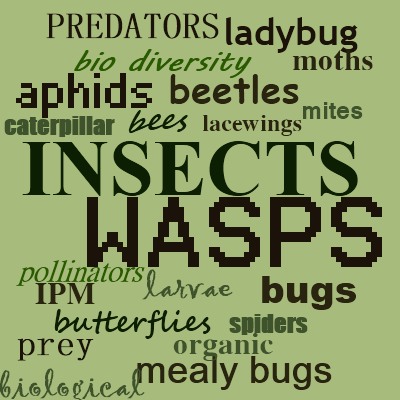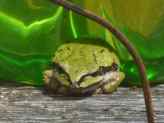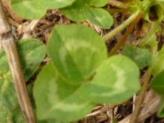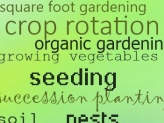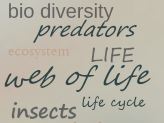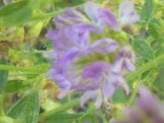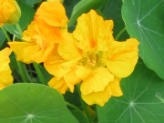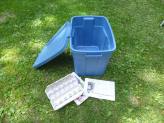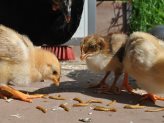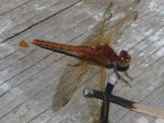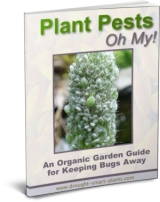Garden Bugs
Pests, Predators and Prey Insects
In any organic garden, there will be garden bugs. The two go hand in hand, and I wouldn't have it any other way.
Some insects are helpful, and chase the pests around and catch them for a meal; others are damaging to plants; sometimes they are desirable as pollinators.
Having a wide diversity of garden bugs will help keep the bad guys in check, and also add a lot of excitement and activity; make sure you take a break now and again just to watch.
Some of the good bugs and bad ones are listed here: Some, such as ants fit into both categories; they are great tillers of the soil, but they also farm aphids, bringing in herds to tend - on your plants.
Even if the harmful insects do damage to our crops, they are also required as food for the predators.
Using controls that won't kill off all the food for the beneficial insects is so important. Mechanical control, such as trapping or using something that is short lived in the environment to kill only those pests is a fine art.
Good Garden Bugs
|
Bad Insects
|
Even these categories are not written in stone - a bug can be bad for your plants, but useful for the environment as a whole.
Even pesky mosquitoes can be food for dragonflies (good) and for feeding baby birds (also good).
If you can identify something that preys on the bugs that are damaging your garden plants and vegetables, try and encourage those, by adding some habitat, or giving them a place to call home.
Inviting predators in can make all the difference. Keep watching and noticing which eats what in your garden.
Which are Beneficial? And which are Bad?
There are many insects in a healthy organic garden; trying to figure out which ones are beneficial, and which are bad is sometimes a puzzle - sometimes, the bugs do damage to plants, and eat other pests, so the line is blurred.
Other organic gardeners have spoken their piece here about the bugs in their gardens...
Click below to see them...
Dragonflies
In prehistoric times, apparently these insects had 10 foot wingspans. That's pretty scary, especially when you see them taking insects on the wing. They …
ants
My soil used to be wonderful! I bury all my green refuse (apple peels, carrot shavings, etc). I had lots of big fat worms.
Then the ants moved in. …
Plant Bug
Plant Bugs are really what these are called; it's not just a generic term for insects that crawl around on plants.
There are many, many different …
Syrphid Flies
These little wasp like bugs are also called hover flies, because that's what they do, hover over and around flowers and plants.
They're not looking …
Lady Bugs
These little red black spotted beetles are well known, but did you know it's the larvae that create havoc amongst pest populations?
The adults eat …
Aphids
Aphids are sometimes also called 'plant lice' or 'greenfly' depending on where in the world you are gardening.
They spring, fully formed, ready to eat; …
Ground Beetles
There are many kinds of beetles that you have in your garden, even though you probably won't see them much; many are nocturnal, trundling about all night, …
Green Lacewing
Green Lacewings are a common sight in an organic garden, especially if you're surrounded by woodlands.
I've seen these fragile looking insects hatch …
Solitary Bees
Before there were honey bees, solitary bees did all the work of pollinating plants in gardens; blue faced bees, mason bees and many other species of these …

